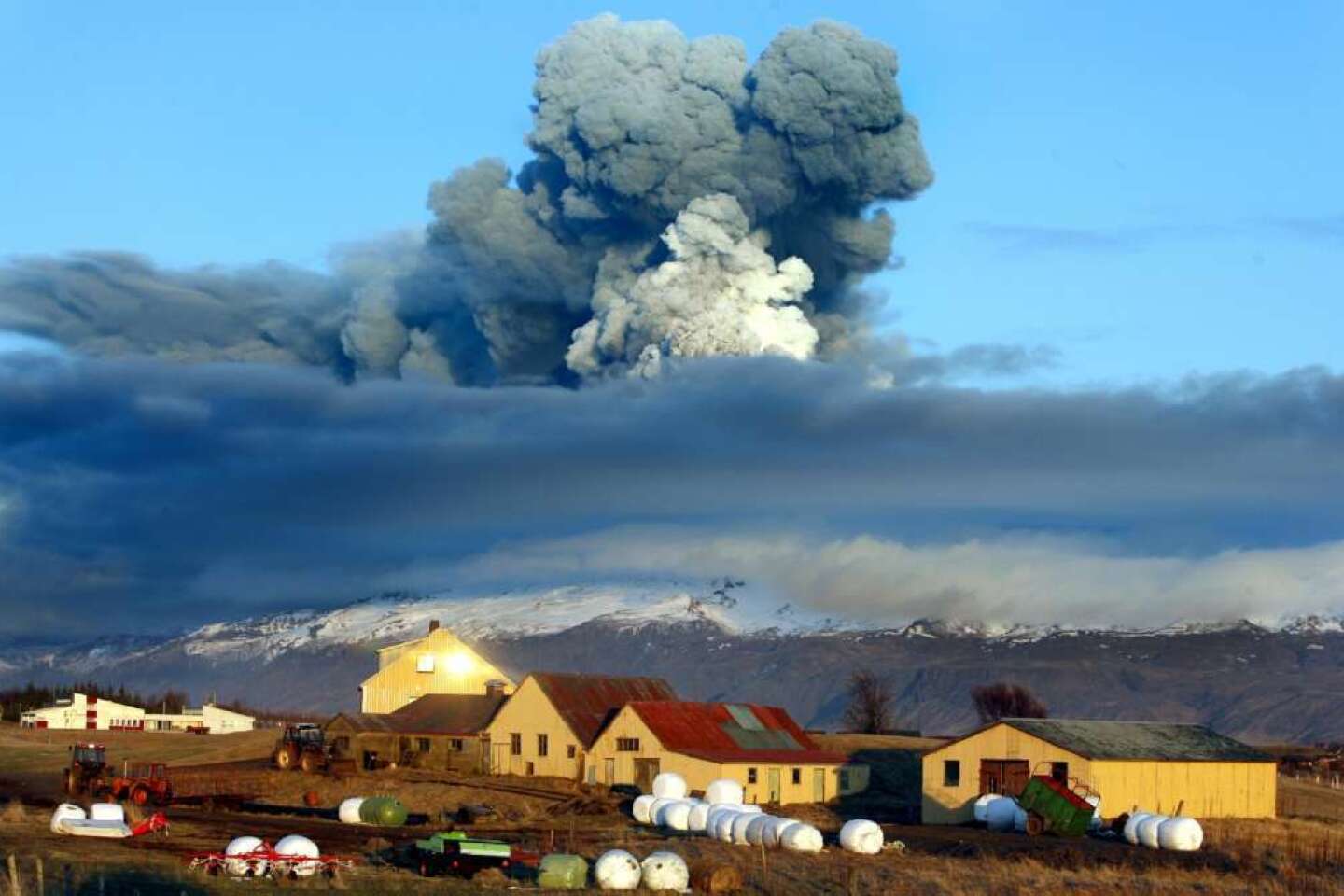Volcanoes slowed global warming, report says; it won’t last
- Share via
An unusual swarm of volcanic eruptions over the last 14 years may be partially responsible for the slowing of global warming, a new report suggests.
The 17 eruptions from 1998-2012 pumped sulfur dioxide into Earth’s upper atmosphere, where it formed liquid particles that reflected more sunlight back to space, moderating the larger-scale warming of the planet surface, according to the study published online Monday in Nature Geoscience.
Adding the volcanic activity into calculations effectively reduced the discrepancy between observed temperature trends and the models that underpin the Intergovernmental Panel on Climate Change’s reports on climate change attributable to human activity.
Those models assumed that the additional aerosols pumped into the atmosphere by such events at the 1991 eruption of Mount Pinatubo in the Philippines would eventually subside to zero.
“That’s not what happened in the real world,” said said Benjamin D. Santer, a climate scientist at Lawrence Livermore National Laboratory who was lead author of the new study. “Effectively, the real world has experienced a partial cooling effect associated with this uptick in volcanic activity.”
The international team looked at satellite readings of temperature in the lower troposphere, the 11-mile-thick mass of air closest to Earth’s surface, and compared them with 28 climate models. Then they factored out the natural effects of the El Niño Southern Oscillation, which causes varying cooling and heating of the eastern equatorial Pacific Ocean. The models proved accurate until the beginning of the current century, according to the study.
But actual temperatures soon bucked the trend. That discrepancy set off a flurry of speculation among skeptics that the framework underlying climate change was fatally flawed.
Scientists, however, had begun examining the moderation in warming rate, focusing on such phenomena as fluctuations in solar cycles, the absorption of heat by the oceans and an increase in sulfur dioxide emissions from coal burning in China.
Last year, a Nature study suggested that changes in the Pacific Ocean oscillation could be cycling the heat from the troposphere to the ocean’s water.
“That’s part of the story, but it’s not the whole story,” Santer said. The data in that study, in fact, may just be picking up on the effect of the eruptions, half of which occurred in the tropics.
“When you get a big volcano that injects sulfur dioxide into the stratosphere, into the upper atmosphere, that sulfur dioxide forms these liquid phase sulfuric acid droplets, those reflect incoming sunlight back to space, they cool the lower atmosphere and surface, and when they cool the ocean surface, the recovery takes years.”
So, there will be periods of slowed warming as the ocean “rebounds” from the cooling and the “slow, inexorable warming” resumes, said Santer.
“Volcanoes give us only a temporary respite from the relentless warming pressure of continued increases in CO2,” said Piers Foster, a climate scientist at the University of Leeds, who was not involved in the study.
“It’s a fascinating detective story; volcanoes are part of that detective story,” Santer said. “It’s not like we’re whistling around in the dark trying frantically to come up with ever more implausible explanations for what happened, who done it.”








